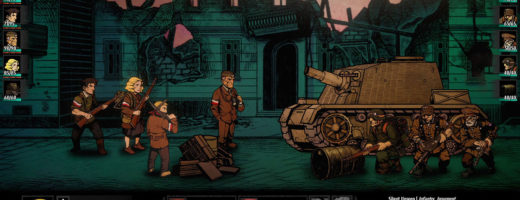Shining Resonance Refrain Review
A Dim View
The Shining series is renowned for providing many flavours of RPGs, but that diversity may have counted against it as the series all but disappeared from the west, though it did keep a presence in Japan. The first release in the series to hit North America in over a decade, Shining Resonance Refrain — an enhanced version of a Japan-only PlayStation 3 title released on PC and all the following-gen consoles — starts off well enough. However, the goodwill soon dissolves, and the majority of the game becomes a slog. Those for whom this is the first taste of the series aren’t going to be encouraged to seek out more.
Shining Resonance is set in the nation of Astoria, a relatively small kingdom that has been fighting off the advances of its neighbouring empire for nearly a decade. Astoria’s world is home to both humans and elves — though any differences between the races play no significant part in this story — and more importantly was previously home to dragons. Far in the past, a war broke out between those forces allied with the dragons and those of a deity called Deus, with the Shining Dragon eventually managing to seal away Deus but at the cost of the lives of its brethren. This background comes into play with current events through Yuma, a young man who houses the soul of the Shining Dragon and who is likely the key to breaking the stalemate between Astoria and the empire, as the latter begins a fresh push in the conflict.
Yuma starts off as the standard reluctant protagonist, attempting to stay out of the conflict and not use the Shining Dragon’s power because he fears he lacks the ability to control its incredible destructive power. However, Yuma snaps out of this soon enough, and happily lends his aid to Astoria and the cadre of allies he picks up — of all whom use the Armonic weapons-slash-musical-instruments bestowed upon the world by the Shining Dragon in his struggle against Deus. All of the characters fall into traditional archetypes, especially the antagonists, and the result is a plot that contains absolutely no surprises whatsoever. All of the events can be pretty easily guessed at long before they happen, even more so with the various hints given in cutscenes. The ending is satisfying, but there’s very little substance to the story as a whole.

The plot may be bog-standard, but Atlus’ localisation at least makes for plenty of entertaining event scenes.
The by-the-numbers plot is at least redeemed by a great localisation from Atlus USA, with Sega making use of its recently-acquired subsidiary. The characters, though there’s nothing new about their characterisations, are given plenty of opportunities to shine thanks to great writing in the English script, with strong voice acting to accompany them. Lots of various side-events help to add depth that is sorely lacking in the main thread of events. Adding some dating-sim elements to the narrative, Yuma also has the opportunity to build his relationship with his various allies through an initially interesting, but in practice basic and repetitive, system of late-night chats and date events. These lead to a choice at the end of the game made between those characters Yuma has achieved a high enough relationship with, providing a brief post-credits epilogue focused on that pairing.
Shining Resonance Refrain features an action combat system, with battles taking place on the world’s various fields. Touching a visible enemy, or running into certain event circles, will cause combat to start, with a circular battlefield set up as the remaining opponents for that encounter wander in. Players control one of the four characters in combat, which can be changed readily in the pause menu, with the other three controlled by an AI that will follow one of four very basic strategies but on the whole does its own thing. Each character is appreciably different in terms of style with ranged and both speedy and slower melee attackers present, but the controls are consistent across them all.
The controlled character has an arc indicating his or her current action points, which are used for basic and heavy attacks, with dodge and block options taking the other two face buttons. Each character also has four skills equipped, used by holding down the left shoulder button, that take the forms of buffs, healing, or special attacks. The system works well, but doesn’t feel as fluid as a lot of other action RPGs out there. The pace is a lot more deliberate, with many actions having a significant wind-up and players not able to escape action once they’ve begun, which can be annoying when the enemy does an action that cannot be reacted to. The overall system works decently enough but there’s just not enough control or fluidity to the system to be worthy of a recommendation on its own.
Yuma quickly gains access to a unique ability: transforming into the Shining Dragon. This form is considerably more powerful, but using it comes with the significant drawbacks of every action using MP and an early-game danger of Yuma going berserk and attacking party members if he should run out of MP. Though it certainly makes its mark in the first half of the game — able to defeat bosses almost single-handedly in even the limited time player get with it once activated — Yuma’s dragon form becomes a bit less useful as the game goes on, if for nothing else than that it prevents item use, which is often frequently needed thanks to the AI not having particularly good survival skills. Meanwhile, there are also B.A.N.D. performances, where the party starts playing a song with their Armonics that provides buffs while the meter on the left-hand side drains, and these two systems work nicely together as the B.A.N.D performance also removes the danger of Yuma going berserk, amongst other things.
Shining Resonance features a decent amount of depth in its various systems, but does a poor job of explaining many of them. The most egregious of these is a bond system that lets players set up links between characters based on various titles that are attained throughout the game. There’s no indication of what these actually do, however, with the description just being a fluffy sentence describing the bond rather than any effects. A series of side-dungeons is available through a magical grimoire that can be adjusted through a series of special items found dotted around the game, but again the game makes no effort to explain any benefit for doing them. There is no equipment, but instead party members can give their weapons different tunings, while gems provide a wide variety of potential passive boosts. There is also a fairly basic crafting system and an assortment of side-quests that mostly involve busywork collecting materials or beating up monsters.
Awful pacing is another significant issue in the game. Exciting and key events are sandwiched between long and repetitive slogs through the game’s world. Even if players try to shorten the time spent wandering by running away from enemies, they will soon run into some odd balance issues. The game appears to expect that players will defeat every single enemy they come across, with results in frequent battles in the second half of the game where the party is ten levels below the enemies they are encountering. On the whole the disparity isn’t a huge problem, but there are certain fights where the gap causes some nightmares. Oddly enough, opponent size seems to play a big part in the balance — particularly when it comes to bosses — as bigger enemies are often much easier to deal with than the smaller ones. There are some tricks to alleviate it in optional grimoire dungeons, but the grinding process is unappealing and additional exploration doesn’t provide good enough rewards to encourage players to do it.
One of the more interesting things Shining Resonance Refrain includes is the Refrain Mode available when starting a new game. This allows two additional characters to join the party, complete with various extra event scenes and spoiler-heavy commentary on events involving them. There are, however, no changes to the plot, with the two characters contradictorily taking on their regular NPC roles during it, hence why this is only recommended for players who have gone through the story before. Shining Resonance doesn’t contain a New Game Plus, but upon completing the game — which will take around thirty to thirty-five hours — players can save the file. Loading this file dumps them just before the final boss, but in the process also unlocks plenty of additional epilogue and side events as well as further challenges.
Shining Resonance Refrain‘s visuals make it apparent that the game was initially designed for the previous generation of consoles. The game still looks perfectly fine though, and the character designs are pleasant. However, the environment side of things is rather lacking; all the zones are boring forests, plains, deserts, etc. that provide no lasting impact. There is also a fairly small pool of enemies across the zones, most will be filled with the same three or four enemies and these will be recycled through the game with simply their stats increased. The voice acting is strong throughout, though it is far from omnipresent. The music has a few engaging tracks, but the whole is immediately forgettable.
Shining Resonance Refrain pivots between enjoyable and very dull moments. For every good aspect, there is another that undoes it, while everything else is strictly mediocre. If players are in desperate need of an action JRPG and have somehow managed to exhaust all other options, then Shining Resonance Refrain may fill part of the void. However, it certainly isn’t the glorious return that series fans have been hoping for.


Great localisation
Decent system depth
Entertaining side events
Abysmal pacing, odd balance
Incredibly predictable plot
Many system elements are poorly explained, if at all








Recent Comments